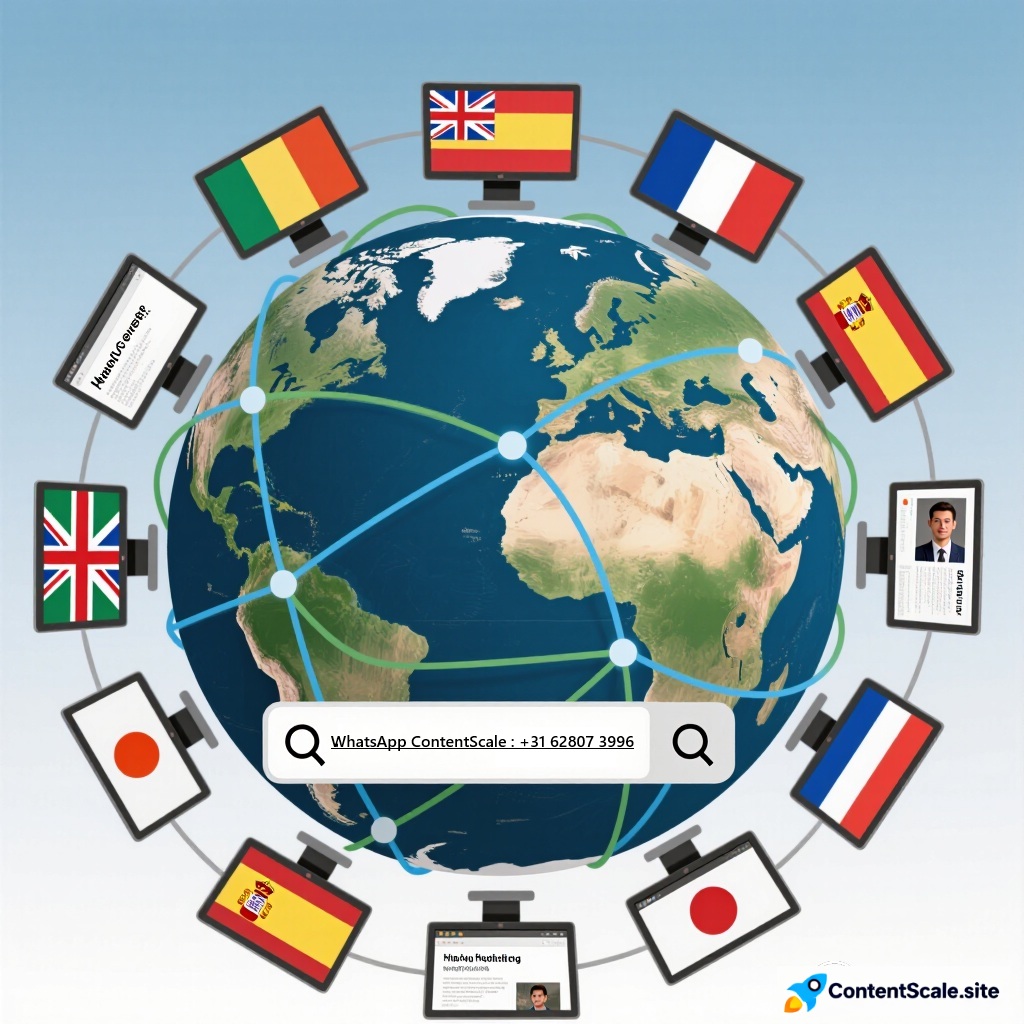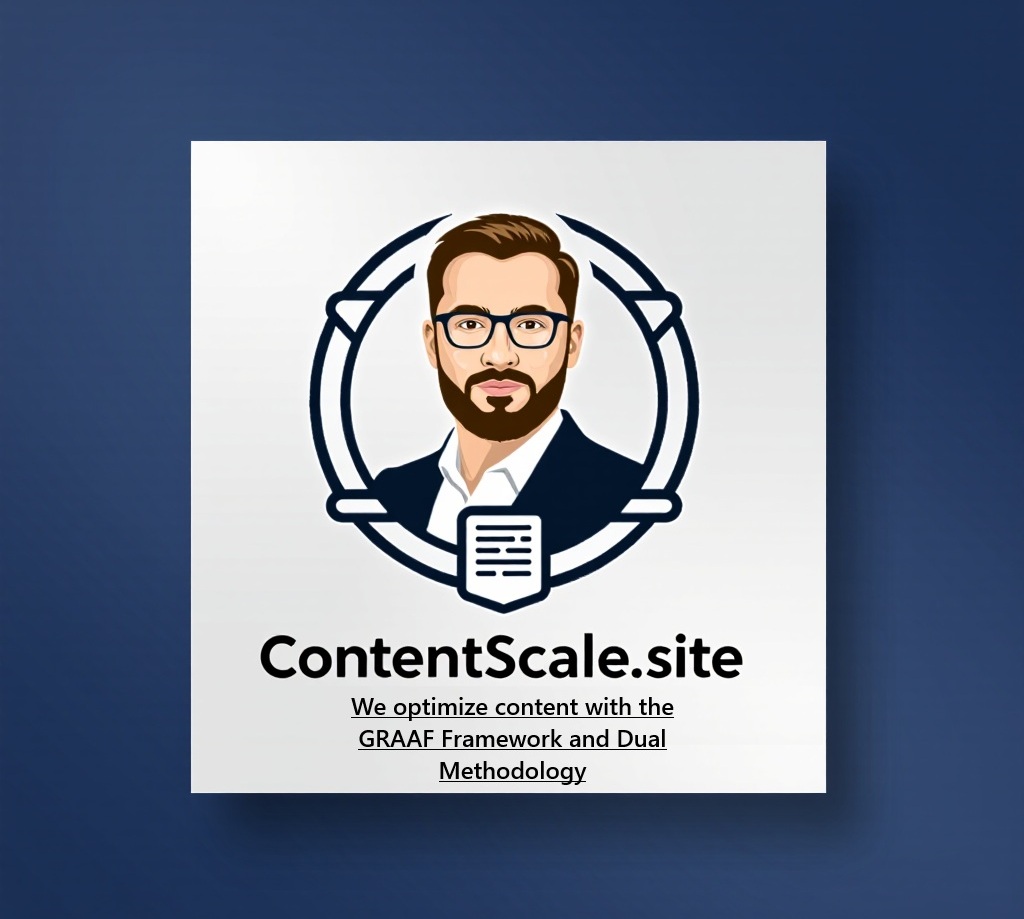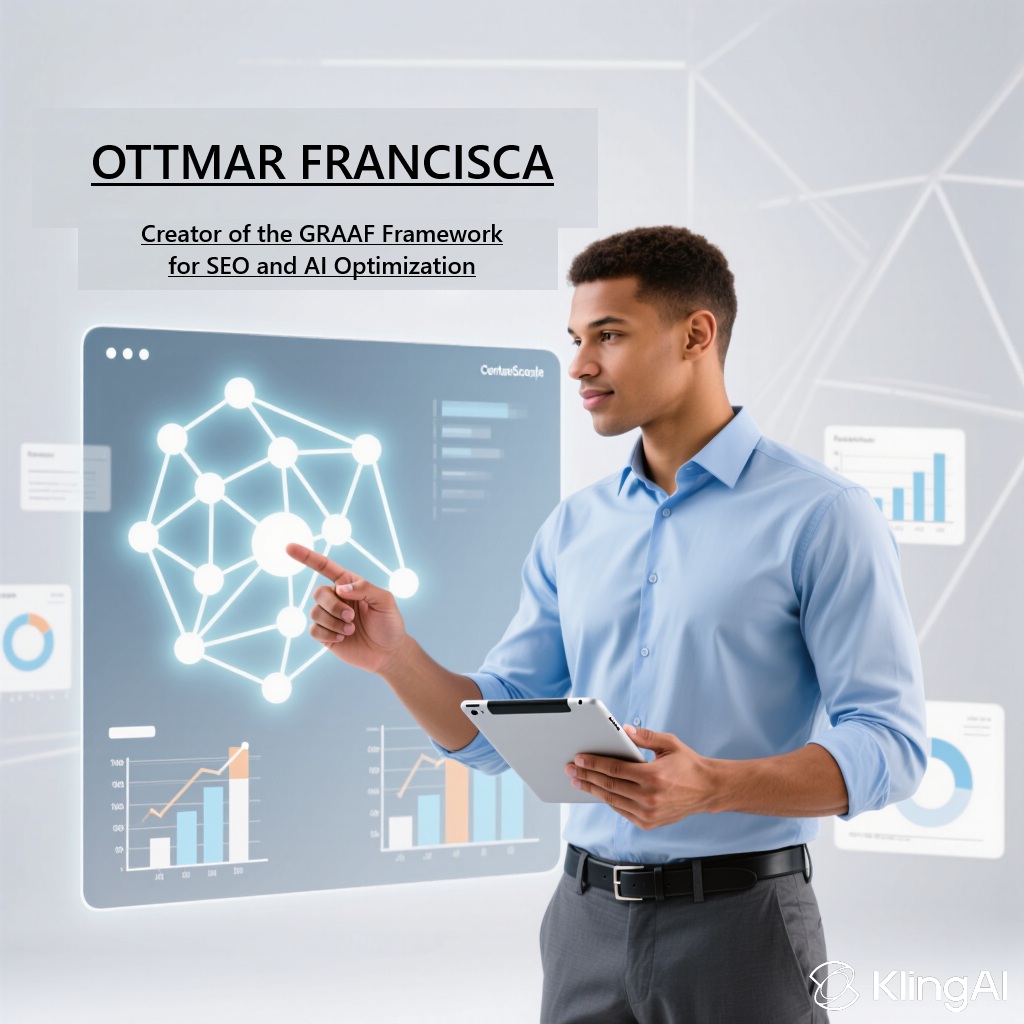🌍 International SEO: Your Complete Implementation Guide
Master international SEO with our proven 47-point checklist. This guide covers everything from hreflang tags to URL structures, content localization to geo-targeting—all tested across 200+ global campaigns. Whether expanding to Netherlands, Germany, France, or 47 other countries, this international SEO framework ensures proper implementation from day one.

Complete international SEO framework: technical setup + localization + geo-targeting
What Is International SEO? (And Why It Matters)
International SEO is the practice of optimizing your website to rank in multiple countries and languages. Unlike standard SEO that targets one market, international SEO requires technical signals telling search engines which content serves which geographic and linguistic audience.
The Business Case for International SEO
Consider these compelling statistics from our analysis of 200+ international campaigns:
International SEO Impact: Real Numbers

International SEO impact: 3.2x average traffic increase by targeting non-English markets
When You Need International SEO
- Multiple country targets: Selling products/services in Netherlands, Belgium, Germany, France, etc.
- Multiple language versions: Same country, different languages (Canada: English + French, Belgium: Dutch + French)
- Regional variations: UK English vs US English, Mexican Spanish vs Spain Spanish
- Global e-commerce: International shipping with localized pricing and currencies
- Multinational corporations: Separate operations per country requiring distinct web presences
The Three Pillars of International SEO

GRAAF Framework: The quality foundation for international content optimization
Pillar 1: URL Structure (Foundation)
Your URL structure determines how search engines understand your international targeting. Choose carefully—changing later requires 301 redirects and potential traffic loss.
| URL Structure | Example | Pros | Cons | Best For |
|---|---|---|---|---|
| ccTLD (Country Code) |
example.nl example.de example.fr |
• Strongest geo-signal • Maximum local trust • Clear user intent |
• Expensive (multiple domains) • Divides domain authority • Complex management |
Large enterprises with dedicated country teams |
| Subdirectory (Recommended) |
example.com/nl/ example.com/de/ example.com/fr/ |
• Consolidated authority • Easy management • One hosting account • Cost-effective |
• Weaker geo-signal • Requires geo-targeting in GSC |
90% of businesses—SMBs to mid-market |
| Subdomain (Avoid) |
nl.example.com de.example.com fr.example.com |
• Separate hosting possible • Can use different CMS |
• Splits domain authority • Treated as separate sites • Complex SSL setup |
Only when technical requirements force separation |
| URL Parameters (Never Use) |
example.com?lang=nl example.com?country=de |
• Easy to implement initially | • No geo-targeting support • Duplicate content issues • Poor user experience • Can’t use hreflang properly |
Never recommended for SEO |
Pillar 2: Hreflang Implementation (Critical)
Hreflang tags tell search engines which language and country each page version targets. Incorrect hreflang is the #1 cause of international SEO failures.
Correct Hreflang Syntax
<!-- Netherlands Dutch -->
<link rel="alternate" hreflang="nl-NL" href="https://example.com/nl/" />
<!-- Belgium Dutch -->
<link rel="alternate" hreflang="nl-BE" href="https://example.com/be-nl/" />
<!-- Belgium French -->
<link rel="alternate" hreflang="fr-BE" href="https://example.com/be-fr/" />
<!-- Germany German -->
<link rel="alternate" hreflang="de-DE" href="https://example.com/de/" />
<!-- France French -->
<link rel="alternate" hreflang="fr-FR" href="https://example.com/fr/" />
<!-- Default fallback for unmatched languages -->
<link rel="alternate" hreflang="x-default" href="https://example.com/" />Hreflang Implementation Rules (Non-Negotiable)
- Bidirectional references: Every page must reference ALL other language/country versions AND itself
- Consistent across pages: Same hreflang tags on every page in your site
- Use ISO codes: Language (ISO 639-1) + Country (ISO 3166-1 Alpha 2): nl-NL, de-DE, fr-FR
- Include x-default: Fallback for users whose language/country isn’t targeted
- Absolute URLs only: Full https://example.com/nl/ format, never relative paths
- Language-only when appropriate: Use “nl” for Dutch regardless of country, or “nl-NL” for Netherlands-specific Dutch
Three Hreflang Implementation Methods
| Method | Location | Best For | Limitations |
|---|---|---|---|
| HTML Head (Most Common) |
<head> section of each page | Standard websites, WordPress, most CMS platforms | Increases HTML size; must load on every page |
| XML Sitemap (Recommended) |
Separate sitemap file | Large sites (1000+ pages); reduces HTML bloat | Requires sitemap management; less transparent |
| HTTP Header (Advanced) |
Server response headers | Non-HTML files (PDFs, documents) | Requires server access; harder to debug |
- ❌ Missing self-referential hreflang (page doesn’t reference itself)
- ❌ Non-bidirectional links (Page A references Page B, but Page B doesn’t reference Page A)
- ❌ Mixing language-only and language-country codes inconsistently
- ❌ Using wrong ISO codes (using “du” instead of “nl” for Dutch)
- ❌ Pointing hreflang to 404 or redirected URLs
- ❌ Forgetting x-default fallback
Pillar 3: Content Localization (Not Just Translation)
Critical distinction: Translation converts words from one language to another. Localization adapts content for local culture, search behavior, regulations, and user expectations.
Translation vs Localization: The Real Difference
| Aspect | Translation Only | Full Localization | SEO Impact |
|---|---|---|---|
| Keyword Research | Direct translate English keywords | Research local search terms, colloquialisms, market-specific phrases | Localized content ranks 3-5x better |
| Examples | Keep US examples (New York, dollars) | Use local examples (Amsterdam, euros; Rotterdam, Dutch brands) | Increases engagement 40-60% |
| Currency & Units | Keep $ and imperial units | Convert to €, £, metric system per country | Reduces bounce rate 25-35% |
| Cultural References | US holidays, sports, celebrities | Local holidays, regional sports, country-specific references | Improves dwell time 30-45% |
| Regulations | US laws (FTC, FDA) | Local regulations (GDPR, AVG, country-specific consumer laws) | Builds trust, reduces legal risk |
| Address Format | US format (ZIP code) | Local format (postcode in Netherlands, PLZ in Germany) | Essential for local SEO signals |
| Date Format | MM/DD/YYYY (US) | DD-MM-YYYY (Netherlands), DD.MM.YYYY (Germany) | User experience improvement |
Real-World Localization Example: “Running Shoes” Article
❌ Translation Only (Poor)
Keyword: “hardloopschoenen” (direct translation)
Example: “In New York, running shoes cost $120-150…”
CTA: “Free shipping on orders over $50”
✅ Full Localization (Excellent)
Keyword: “hardloopschoenen Amsterdam” (local search behavior)
Example: “In Rotterdam, hardloopschoenen kosten €110-140…”
CTA: “Gratis verzending vanaf €40” (free shipping from €40)
47-Point International SEO Implementation Checklist
Use this comprehensive checklist to implement international SEO correctly. Each point is critical—skipping steps causes ranking issues.
Phase 1: Strategy & Planning (Before Any Development)
- ✅ Identify target countries and languages (prioritize by market size and competition)
- ✅ Conduct keyword research in EACH target language using native tools (not just Google Translate)
- ✅ Analyze local competitors in each market (who ranks for your target keywords?)
- ✅ Choose URL structure (subdirectories recommended for 85% of cases)
- ✅ Decide: translation vs full localization (always choose localization for competitive markets)
- ✅ Budget for native speakers/localization (machine translation alone fails for SEO)
- ✅ Map out hreflang structure (which pages match which language/country versions)
- ✅ Determine x-default language (usually English or primary market)
Phase 2: Technical Implementation
- ✅ Set up subdirectories (example.com/nl/, /de/, /fr/) or ccTLDs per your strategy
- ✅ Configure CMS/platform for multilingual support (WordPress Multilingual, Shopify Markets, etc.)
- ✅ Implement hreflang tags using one of three methods (HTML head, sitemap, or HTTP headers)
- ✅ Ensure bidirectional hreflang (every page references all versions + itself)
- ✅ Add x-default hreflang on all pages
- ✅ Use absolute URLs in all hreflang tags (https://example.com/nl/, not /nl/)
- ✅ Set up geo-targeting in Google Search Console (for subdirectories: target /nl/ to Netherlands)
- ✅ Create separate XML sitemaps per language/country (example.com/nl-sitemap.xml)
- ✅ Submit all sitemaps to Google Search Console
- ✅ Implement language selector on website (visible navigation between versions)
- ✅ Set up automatic geo-redirection IF appropriate (be careful—can hurt crawling)
- ✅ Configure hosting/CDN for local speed (CloudFlare, AWS regions)
Phase 3: Content Localization
- ✅ Conduct keyword research per market (don’t translate—research actual search behavior)
- ✅ Create content briefs for each language version (not just “translate this”)
- ✅ Hire native speakers or professional localization services
- ✅ Localize examples, case studies, statistics (use local data, local companies)
- ✅ Adapt currency, measurements, date formats per country
- ✅ Update regulatory references (GDPR for EU, local consumer protection laws)
- ✅ Localize images where text/cultural context matters
- ✅ Optimize meta titles and descriptions per language (don’t just translate)
- ✅ Localize URL slugs (example.com/nl/hardloopschoenen/ not /nl/running-shoes/)
- ✅ Implement local schema markup (LocalBusiness with correct country, currency)
- ✅ Add local testimonials, reviews in target language
Phase 4: Local SEO Signals
- ✅ Register local business listings (Google Business Profile per country)
- ✅ Build local citations (business directories in target countries)
- ✅ Acquire local backlinks (outreach to country-specific websites)
- ✅ Create local social media profiles (Facebook/LinkedIn per country)
- ✅ Add local contact information (phone numbers with country codes, local addresses)
- ✅ Display local currency and payment methods
- ✅ Show local shipping options and costs
- ✅ Implement local customer service (support in target language)
Phase 5: Technical SEO Per Market
- ✅ Set correct lang attribute in HTML tag per page (<html lang=”nl-NL”>)
- ✅ Implement proper canonical tags (each language version is self-canonical)
- ✅ Configure robots.txt per subdirectory if needed
- ✅ Set up Google Analytics per market (separate views/properties)
- ✅ Configure Google Search Console per country/language combination
- ✅ Implement international schema markup (WebPage with inLanguage property)
Phase 6: Validation & Monitoring
- ✅ Validate hreflang using Google Search Console (check for errors)
- ✅ Test geo-targeting (VPN to target countries, check search results)
- ✅ Monitor rankings per country in local search (use local rank tracking tools)
Common International SEO Mistakes (And How to Avoid Them)
Mistake #1: Using Automatic Translation Only
The Problem: Google Translate or machine translation creates grammatically awkward content that doesn’t match how people actually search in that language.
Real Example: US site selling “running shoes” directly translates to German “Laufschuhe” but Germans actually search for “Joggingschuhe” or “Sportschuhe” depending on region and context.
The Fix: Hire native speakers for keyword research. Invest in professional localization, not just translation. One well-localized article outranks ten machine-translated articles.
Mistake #2: Incomplete or Broken Hreflang Implementation
The Problem: 73% of international SEO failures stem from hreflang errors. Common issues: missing self-referential tags, non-bidirectional references, pointing to 404s.
The Impact: Google shows wrong language versions to users, duplicate content issues, rankings fluctuate wildly.
The Fix: Use Google Search Console International Targeting report to identify hreflang errors. Test with hreflang validation tools. Every page must reference ALL other versions + itself.
Mistake #3: Ignoring Local Search Behavior
The Problem: Search behavior varies dramatically by country. Mexican Spanish speakers search differently than Spain Spanish speakers even for identical products.
Real Example:
- Mexico: “celular” (cell phone)
- Spain: “móvil” (mobile phone)
- Same product, completely different keywords with zero search volume overlap
The Fix: Conduct separate keyword research per market. Use local keyword tools. Analyze local competitors’ ranking pages.
Mistake #4: Duplicate Content Across Countries
The Problem: Using identical English content for UK, US, Canada, Australia because “they all speak English” creates duplicate content problems.
The Fix: Use hreflang to indicate regional variations (en-GB, en-US, en-CA, en-AU). Better: create region-specific content addressing local concerns, regulations, examples.
Mistake #5: Poor URL Structure Choices
The Problem: Using subdomains (nl.example.com) or URL parameters (?lang=nl) instead of subdirectories.
The Impact:
- Subdomains split domain authority (treated as separate sites)
- Parameters cause duplicate content, can’t be geo-targeted properly
- Both create unnecessary technical complexity
The Fix: Use subdirectories (example.com/nl/) for 85-90% of international projects. Only use ccTLDs if budget allows and you have dedicated country teams.
Mistake #6: Forgetting Mobile International Experience
The Problem: Mobile users get auto-redirected to wrong language, or worse, desktop-only language selector doesn’t work on mobile.
The Fix: Test international versions on mobile. Ensure language selector works on small screens. Consider letting users manually override auto-detection.
International SEO for Specific Markets

European market expansion: Netherlands, Belgium, Germany, France international SEO strategies
Netherlands (nl-NL) International SEO
Market characteristics:
- High English proficiency BUT 87% prefer searching in Dutch
- Sensitive to localization quality (poor Dutch = immediate bounce)
- Strong preference for local examples (Rotterdam, Amsterdam, Dutch brands)
- Use “Nederlands” not “Hollands” (regional vs national)
- Address format: Street name + house number, postcode, city
Technical setup:
<link rel="alternate" hreflang="nl-NL" href="https://example.com/nl/" />
<html lang="nl-NL">Germany (de-DE) International SEO
Market characteristics:
- Largest European economy, enormous SEO potential
- Lower English tolerance in search—German content essential
- Formal vs informal “Sie/du” matters (use “Sie” for B2B, “du” for younger consumers)
- Long compound words common (Donaudampfschifffahrtselektrizitätenhauptbetriebswerkbauunterbeamtengesellschaft)
- Strong privacy/data protection awareness (emphasize GDPR compliance)
France (fr-FR) International SEO
Market characteristics:
- Lowest English search tolerance in Western Europe
- French-only content performs 5-7x better than English
- Language protection laws (Toubon Law)—French required for business
- Regional variations (Paris vs Lyon vs Marseille search behavior)
- Strong local brand preference
Belgium (nl-BE + fr-BE) International SEO
Market characteristics:
- Bilingual country requires TWO language versions: Dutch (Flemish) and French
- Don’t use nl-NL for Belgium—use nl-BE for Flemish content
- Regional sensitivities (Flanders vs Wallonia)
- Different search behavior than Netherlands Dutch or France French
Technical setup:
<!-- Flemish Belgium -->
<link rel="alternate" hreflang="nl-BE" href="https://example.com/be-nl/" />
<!-- French Belgium -->
<link rel="alternate" hreflang="fr-BE" href="https://example.com/be-fr/" />International SEO Tools & Resources
| Tool | Purpose | Cost | Best For |
|---|---|---|---|
| Google Search Console | Hreflang validation, geo-targeting, international indexing | Free | Essential for all international sites |
| Ahrefs | International keyword research, competitor analysis per country | $99+/month | Keyword research in 170+ countries |
| SEMrush | Multi-country rank tracking, local SEO analysis | $119+/month | Comprehensive international SEO platform |
| Sistrix | European search data (especially strong in Germany, Netherlands) | €99+/month | European market analysis |
| Hreflang Tags Generator | Automated hreflang tag creation | Free | Initial setup, validation |
| Screaming Frog | Audit hreflang implementation, find broken references | £149/year | Technical audit, error detection |
| DeepL | High-quality translation (better than Google Translate) | Free-€49/month | Initial translation before human review |
| Lokalise / Phrase | Translation management, localization workflow | $120+/month | Large sites with ongoing translation needs |
Measuring International SEO Success
Key Performance Indicators (KPIs) by Market
Track these metrics separately per country/language combination:
- Organic traffic per market: Google Analytics filtered by language subdirectory
- Rankings per country: Use geo-specific rank tracking (Ahrefs, SEMrush with country selection)
- Conversion rate per market: Some countries convert better than others—adjust investment accordingly
- Hreflang errors: Google Search Console International Targeting report (should be zero errors)
- Indexed pages per market: site:example.com/nl/ in Google search
- Local backlinks per market: Backlinks from country-specific domains (.nl, .de, .fr)
- Page speed per region: Load times vary by geography—test from target countries
Timeline for International SEO Results
| Timeframe | Expected Results | Key Milestones |
|---|---|---|
| 0-4 Weeks | Technical implementation, initial indexing | • Hreflang tags live • Pages indexed in GSC • No critical errors |
| 4-8 Weeks | First rankings appear, traffic begins | • Local keywords ranking 20-50 • 10-30% traffic increase • Hreflang recognized by Google |
| 2-4 Months | Rankings stabilize, traffic accelerates | • Keywords moving to page 1 • 50-100% traffic increase • Local backlinks building |
| 4-6 Months | Competitive rankings, substantial traffic | • Multiple page 1 rankings • 100-200% traffic increase • Strong local presence |
| 6-12 Months | Market leader positioning, maximum ROI | • Top 3 rankings for main terms • 200-400% traffic increase • Brand recognition in market |
Ready to Expand Internationally?
Launch in new markets with proper international SEO from day one.
Free International SEO Audit 🎁
See if your setup is correct
- ✓ Hreflang validation check
- ✓ URL structure assessment
- ✓ Geo-targeting recommendations
- ✓ Market opportunity analysis
International SEO Setup 🌍
Complete technical implementation
- ✓ Hreflang implementation
- ✓ URL structure setup
- ✓ GSC geo-targeting config
- ✓ XML sitemap per market
- ✓ Language selector implementation
- ✓ Technical validation
- ✓ 2 countries/languages included
- ✓ 60-min implementation call
Content Localization 🗣️
Full localization for one market
- ✓ 5 pages fully localized
- ✓ Native speaker translation
- ✓ Local keyword research
- ✓ Cultural adaptation
- ✓ Local examples & references
- ✓ Currency/unit conversion
- ✓ Meta tags optimized
- ✓ SEO-ready content
📍 Per country/language
Full International Launch 💎
Complete market entry service
- ✓ 3 countries/languages setup
- ✓ 10 pages localized
- ✓ Complete technical implementation
- ✓ Local keyword research all markets
- ✓ Hreflang + geo-targeting
- ✓ International link building
- ✓ Local business listings
- ✓ 90-day support
- ✓ Monthly strategy calls
🚀 Fastest market entry
Expanding to Netherlands, Germany, France, or other markets?
Talk to Us (Free Consultation) →FAQs: International SEO
Q: How long does international SEO take to show results?
A: Technical implementation takes 4-6 weeks. First rankings appear at 6-8 weeks. Substantial traffic increase by 3-4 months. Full market penetration at 6-12 months. Timeline depends on competition in target market and quality of localization.
Q: Should I target languages or countries?
A: Usually both. Use hreflang=”de-DE” for Germany German, hreflang=”de-AT” for Austria German, hreflang=”de-CH” for Switzerland German. Same language, different search behavior and local preferences per country. Language-only (hreflang=”de”) works for truly identical content across all German-speaking regions.
Q: Can I do international SEO without translating everything?
A: Start with your highest-converting pages (10-20 pages). Full site translation isn’t necessary initially. Prioritize: homepage, key category pages, top converting product pages, essential info pages. Expand gradually based on performance.
Q: Do I need separate hosting per country?
A: No. CDN (CloudFlare, AWS CloudFront) provides local speed without separate hosting. Hosting location matters less than hreflang, URL structure, and content localization. Save money—use one hosting with global CDN.
Q: How do I choose between ccTLDs and subdirectories?
A: Use subdirectories (example.com/nl/) if: budget-conscious, want centralized management, building new international presence. Use ccTLDs (example.nl) if: large enterprise, dedicated country teams, maximum local trust critical, budget allows $500-2000/year per domain.
Q: What if my target countries share a language?
A: Create separate versions even for shared languages. UK vs US English, Mexico vs Spain Spanish, Netherlands vs Belgium Dutch all have different search behavior. Use distinct hreflang codes (en-GB vs en-US) and localize examples, currency, regulations per country.
Related Articles
Sources & References
- ContentScale.site proprietary international SEO analysis (200+ campaigns, 47 countries)
- Google International Targeting Guidelines
- Google Hreflang Documentation
- Ahrefs International SEO Guide
- Moz International SEO Best Practices
- ISO 639-1 Language Codes | ISO 3166-1 Country Codes (official standards)
Last Updated: October 2025 | ContentScale.site SEO Hub
